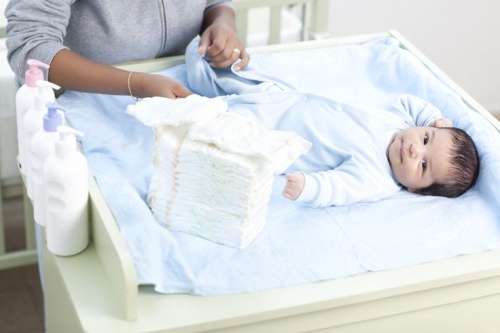What You Should Know about Your Son's Genital Hygiene

Good genital hygiene is something that you should learn about as early as possible, to avoid problems later on. If you are a first-time mother of a baby boy, you may not have realized that your baby’s penis needs special care.
This is not something to be afraid of, and it is not difficult to get the hang of the routine. Caring for babies’ skin is very important, and when it comes to their genitals, there is a special method.
For baby boys, there are basic rules for genital hygiene. Dads may be more familiar with these, while for new moms this may be unknown territory.
Although there will always be pediatricians to help us to carry out these routines, it’s a good idea for mothers to get used to providing the care that is so important for the wellbeing of our babies. And in any case, even fathers may be unclear on the specifics.
This procedure should be routine, so all mothers eventually get enough practice. The main thing is to be aware of the do’s and don’ts. Don’t be nervous about doing this yourself, and always keep in touch with your pediatrician.
What you should know about your son’s genital hygiene

- Whether you have a baby boy or a girl, you will need to pay special attention to genital hygiene. This area tends to be under a diaper most of the time. Add in the presence of urine and feces, and it is not surprising that it is prone to infections.
- At birth, many baby boys will have a condition called phimosis, which means that the glans of their penis is covered by a fixed layer of foreskin. Unlike that of an older boy or man, your baby’s foreskin probably does not retract. This is normal up to a certain point in their life. However, because the orifice through which your baby urinates is very narrow, secretions can accumulate, leading to infection.
- In this case, you should clean your baby’s penis with great care, without forcing the foreskin back. It will almost always begin to retract naturally later in life. Some specialists recommend using corticoid creams, which allow skin to soften.
- If your son is one of the few children born with a foreskin that will retract, you should wash the area of the glans gently with soap and water, without rubbing or drying directly. When you change his diaper, just pat the area dry with a towel, moving the skin with care. Wait until bath time for a full cleanup.
- Don’t worry if phimosis is still there when he is a year old. However, pay attention to the secretions that can occur as the skin gradually separates. When this happens, secretions can accumulate inside the foreskin. Although this is normal, it can cause infections. This is a positive sign, however, as it shows that the phimosis is clearing up naturally. A few weeks’ treatment with antibiotic ointment will solve the problem.
- Some parents were brought up to believe that they should separate the skin with a quick tug. However, this can be very painful for your baby, and can cause wounds which can lead to complications. What’s more, it is unnecessary. Sometimes, circumcision will be necessary to resolve severe cases of phimosis. In the past, many parents used this practice to avoid other illnesses and conditions.
- When changing your baby’s diaper, clean his penis, testicles and anus carefully. Make sure that you don’t miss any folds. An additional tip for first-time moms: remember not to take his diaper off immediately after laying him on the changing table. Wait a few seconds, because male babies will often urinate just after you put them down.

- Don’t go over the top. Almost every part of this genital hygiene routine will fall into place naturally. Some specialists advise against using creams and artificial products like soap around your baby‘s penis. If you do, just be extra careful at bath time to wash off any soap or cream that you are using.
All cited sources were thoroughly reviewed by our team to ensure their quality, reliability, currency, and validity. The bibliography of this article was considered reliable and of academic or scientific accuracy.
- Clínica Mayo (s.f.). Circuncisión (masculina). Consultado el 01 de julio de 2023. https://www.mayoclinic.org/es/tests-procedures/circumcision/about/pac-20393550.
- Stanford Children’s Health (s.f.). Fimosis y parafimosis. Consultado el 01 de julio de 2023. https://www.stanfordchildrens.org/en/topic/default?id=fimosis-y-la-parafimosis-90-P06197.
This text is provided for informational purposes only and does not replace consultation with a professional. If in doubt, consult your specialist.








